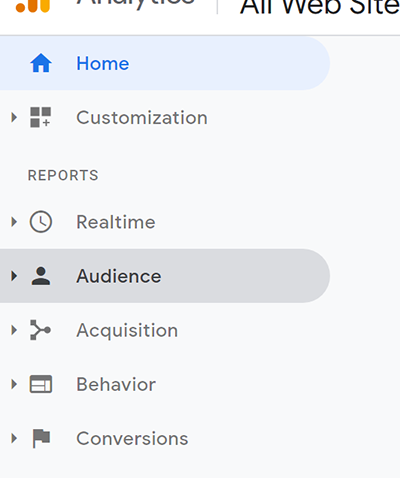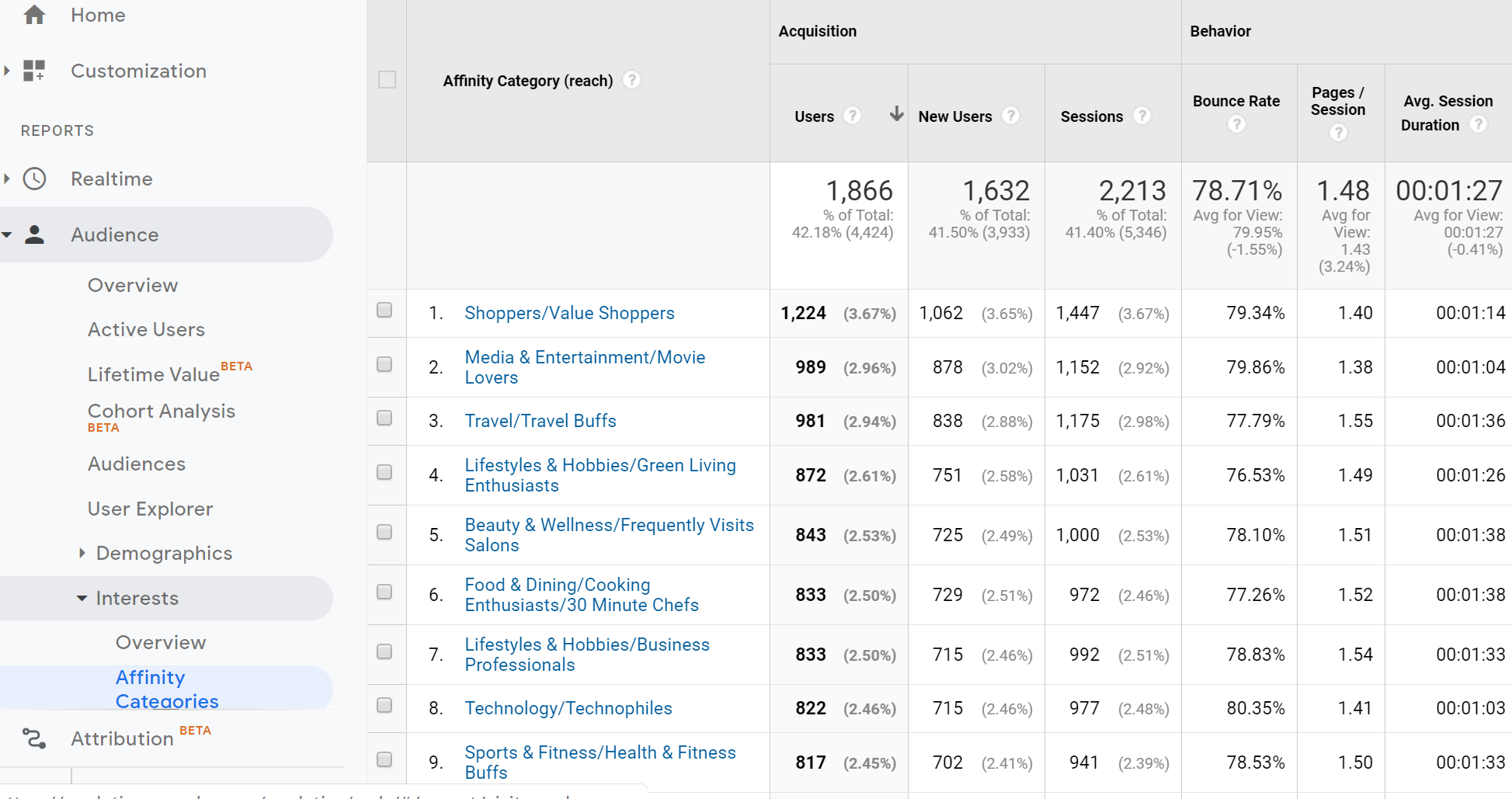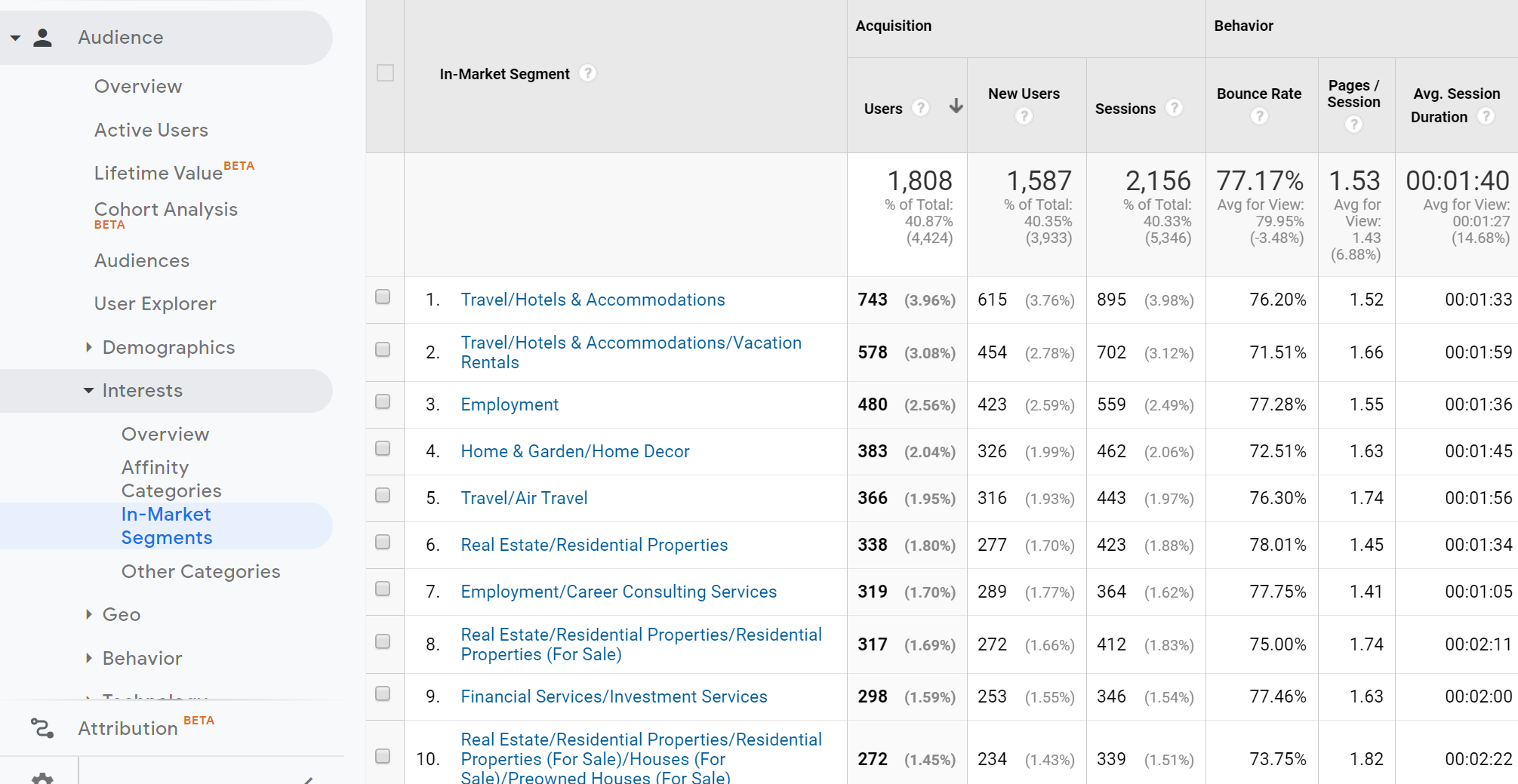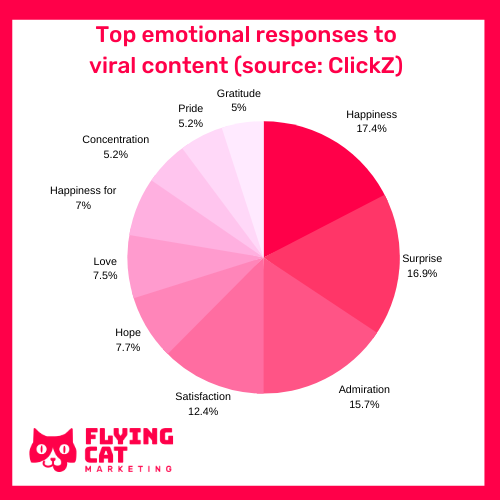In this article, I’m going to break down how to create content that attracts customers instead of crickets or traffic that doesn’t convert.
We’re going to talk about:
- How to recognize when your content is off.
- How to create a customer avatar
- How to find out what their REAL pain points are (not a marketer’s hunch)
- How to address those points with your content
Let’s dive in.
Creating a content marketing strategy that fits your customer
Ever heard the saying what you put out comes back to you? Content has karma too.
If you’re putting out random content, your results will be just as random. It has to make sense for your business AND the clients you are looking to attract.
Your content marketing strategy should be 30% research, 30% creation, and 30% promotion.
Research includes:
- Talking to your departments (what questions do prospects ask sales? What are their complaints with customer service?)
- Talking to customers
- Talking to prospects
- Looking on forums and groups
- Keyword research
You have to play the right moves. Placing too much focus on one objective (sales or UX) can skew your results.
Every department in your company has an impact and is affected.
If you feel like your content’s results are more ‘meh’ than phenomenal, it could be that:
- 1. You prioritize ROI and end up neglecting user experience (oops, why is ROI still dropping?)
- 2. You give too much attention to UX and content doesn’t drive business objectives (amazing content but you get no leads…so, zero ROI)
- 3. There’s too much focus on your marketing objectives and your content is too promotional, depriving it of its purpose, which is to educate your audience
Your strategy should have a careful balance of all these things. It’s a long-term business strategy, not a short-term marketing solution.
Is Content King?
Short answer. No.
Longer answer. It’s complicated.
We are in the age of digital information density. When content first started being released it was a means to create a presence.
Now? With 12-year-old YouTubers, grumpy cat memes, and every company, model and entrepreneur competing for attention – it’s a lot harder to cut through the noise.
We’re at a period of overwhelming information overload. And there’s nothing to suggest it won’t continue. This can seem scary for you and your business. But, here’s why it’s not:
There is no other you.
Most content is cliche, boring, or ineffective. Simply because many businesses overlook the power of connecting with their audience on a human level. And instead approach with a sales-y, “sign up now,” “buy this” “we offer” company-centric, one-sided dialogue.
Imagine you’re at a networking event and someone walks up to and immediately asks if you would like to buy a service or product from them. No introductions, no ice-breakers, just in-your-face tangible version of an ad.
Not only would you not buy, you’d most likely have a sour taste in your mouth if you saw that person again.
With how easily we are able to target customers the mass media generalized content no longer appeals. Customers expect and demand content to be relevant to them.
So, when they see a sales ad disguised as content their inner avoid-the-telemarketer runs for the hills. Those businesses signal the same indifferent response we feel when being solicited to.
It’s not about the content. It’s about your unique perspective on solving your customer’s problems.
The Content-Customer Fit
What is the ultimate goal of content?
Creating content that your customers actually want to read and share. Content that educates them and makes them feel something.
Content you create should:
- Provide actionable benefits to your readers
- Establish your brand as a thought leader
Actionable content means something they can immediately implement after reading. Actionable content can’t be generic. It comes from a place of knowledge and desire to help.
Is your content off?
Let’s do a quick analysis of your content.
The most obvious indicators are when your blog posts talk about new additions to your team, events you’re going to attend or company announcements. Or really, anything about your company. That’s a direct no-no.
But some bad content is less obvious.
If your audience are Airbnb hosts that want to learn to better automate their businesses, will an article like “Things to do while you aren’t Airbnb hosting” help them?
Sure, it seems like you’re targeting them. But they already know what they want to do while they aren’t hosting. What they want to do is spend less time hosting, and that’s the solution they’re looking for.
Again, these needs are obvious, but never speculate or assume you know exactly what your customer wants. Most of the time, you’ll be wrong.
You can’t provide benefits to your prospects if you don’t know what they need. A marketer’s hunch and assumptions (and keyword research) isn’t enough.
Currently, marketing is:
Marketing Team Ideation and Strategizing > Content Production
It needs to be:
Research > Customer avatar definition > Validating ideas with customers > Produce content
Just like you validate your product, you need to validate content

How to identify your prospect’s pain points
The best way to identify your prospect’s pain points is to listen to them. They will tell you what is important to them. There are several ways you can do this.
- Conduct a survey
- Interview customers directly via phone
- Research feedback given via reviews on your product or service
- Interview your sales team
- Interview your customer service/support team
Remember:
Bad marketing is company/product focused.
Good marketing is customer/problem-solution focused.
Content marketing isn’t for selling. It’s for establishing trust and getting them to connect with you.
When you establish that trust, you sell more.
Pay attention to this long-term vision and you will see more short-term results.
To create content that addresses their pain points you have to speak directly to your target audience. They have to feel like every message is personalized to their needs and interests.
Pro tip: When people are doing surveys or answering questions they answer with logic. Be aware that purchasing decisions are done with emotion and justified with logic after the fact. Analyze what your target market is actually buying or looking for.
How to create a Customer Avatar
Creating hyper-targeted messages requires you to get inside your target market’s mind. You need to go beyond demographics.
![]()
This is where we dive into psychographics and your customer’s day-to-day.
When this is over you should know:
- What their day-to-day looks like
- What their frustrations were before your solution
- Other solutions they tried out (and why those didn’t work)
- The before and after of their day-to-day regarding your product
- Who they report to
- What their professional goals are (if you’re B2B)
The idea is to enter the inner dialogues your prospects are having and discover what result they are actually buying. This conversation will look different for a 19 year old single college student who plays football versus a 53 year old entrepreneur who has a family and owns a home.
What is a Customer Avatar?
The website Einsteinmarketer.com defines a customer avatar as:
“a detailed profile of your ideal customer. It doesn’t make assumptions or categorize people into groups. The avatar focuses on one person and outlines everything about them. It goes into much greater depth than a regular marketing persona, providing marketers with many more targeting tools.”
Picture your ideal customer.
- Who are they?
- What are their dreams, desires, and interests?
- What does their day-to-day look like?
- What do they look like?
- Where are they? FB or LinkedIn? Quora or YouTube?
- What groups are they apart of?
- What email newsletters do they subscribe to? What blogs do they read?
- What keywords are they searching for on Google?
- What books are they buying on Amazon?
- What are their emotional triggers or hot buttons?
- What language do they use and respond to?
- What are their fears and frustrations?
Theorize all of these things and document them.
Now let’s stop theorizing and confirm our hypotheses.
Where to find this information about your customer
Start at home
Before you start doing any research, you should just ask the customers you already have. Pick some of your favorite customers and find out if they’d be willing to get on a quick call with you or fill out a survey.
When you get them on the phone, ask them if you can record the call so that you can pay attention when they’re answering.
Later you can code the conversation for themes that pop up.
The goal is to draw out recurring themes and perform these interviews until you can predict what they’re going to say.
That’s when you’ve understood the customer.
In the interview, ask them the following open-ended questions:
- Can you explain your role within the company?
- What does your day-to-day look like?
- Before you started using [your product], what frustrations came up?
- What caused the moment when you said “that’s enough, I need to find a solution”?
- What other solutions did you try?
- What are your daily challenges?
- What does your day-to-day look like now?
- What’s your favorite channel for learning about your sector (forums, peers, blogs, podcasts, etc.?)
Note down language they use to describe their work and challenges. You’ll want to reflect the same language back to them in the call and in your content. Start creating a Voice of Customer Document where you can keep track about how they refer to your product (i.e. do they call it a solution, product, platform, etc.?).
Talk to your sales & customer service departments
Your content strategy needs to be aligned with the sales & customer service departments. After all, they’re the ones who are actually talking to the customers, not you.
Find out what objections come up during the sales process and how you can create content that helps smoothen that process out.
If you can, listen in on some sales calls and see what the interaction with the customer is like. Note down any repeating language.
Google Analytics
The first place you can look is your Google Analytics. It includes demographic information but also psychographic information (which includes interests and more).

Go into your Google Analytics and click on the Audience tab. You can also get all their demographics from here in terms of age, location, language, etc. But today we’re going to focus on psychographics.
Click on Interests > Affinity Categories. This is where you’ll see their overall interests.

Then you can click in-market segments to see their interests directly related to your industry. In this case, the industry is short-term rentals.
Here we see that the majority of users are interested in travel. That’s useful to know.

Facebook groups and forums
Join Facebook groups where your target client hangs out. Find the ones where people are posting a lot of questions every day (rather than the group owner monopolizing with their live videos or promotions).
It may take some research to find the right groups, but once you’re in, you’ll have a gold mine of information and questions.
Jot down what questions people are asking here (make sure that these are, indeed, the kind of people who are purchasing your product). If you have the time, participate in the forums and get to know people.
Down the line, if you build trust, you can also send surveys and even beta products to your community here.
How to grab your ideal client’s attention
You know who your ideal clients are. Now you have to create compelling content that grabs their attention and drives a response from your target audience.
Based on your research you know what your customers want. Take that information and create content that will be most helpful to solving their problems.
All healthy relationships are based on an exchange of value. Come from a place of giving, not asking. Your content should be truly and deeply trying to solve your customer’s problems without asking for anything in return.
So you’ve found your groove, and you’re creating valuable, targeted content…
And silence. Nothing. Nada. Crickets.
First. Never stop producing content.
But know that without proper distribution of your content, it will be unseen and unheard. And what’s the point if you’re not getting eyes on your content?
At this point we’ve built a really awesome car. Exterior and interior is S class. Driver is buckled and ready to go. But without gas…no matter how great a car or driver, that car is going nowhere.
Creating is just one part, you have to instill share ability into every piece of content. What does that mean?
When was the last time you shared something with someone?
Was it funny? Inspiring? Did it incite anger or sadness?
Research has shown that people are most likely to engage with emotional content.
The stronger the emotion the more likely they are to share it with others they perceive will feel similarly.

If you can pair an emotion with an element of surprise, that makes your content more shareable. Or pack it full of data in a digestible format.
So when brainstorming content ideas see if:
- Your research has provided you with a possible trending idea
- Your idea is controversial, funny, or otherwise providing a strong emotional response
- You’re repurposing content to get the most use and building shareability
- You can connect with industry influencers to share your content
- You can use attention-grabbing images, graphics or videos
The types of content that gets the most shares are:
- Original research: white papers, reports or case studies with new, never-before-seen information
- Journalism and opinions
- Listicles
- Videos
- How-To’s & Why’s
- Quizzes
- Infographics
Another factor is your search engine optimization. Your SEO and keywords will make a big impact on potential clients finding your content – or not.
Conclusion
You may have heard this before, but it’s something that warrants repeating.
Your content isn’t meant to promote you and your product. You aren’t supposed to ask for something in return. Content is meant to build trust and provide value. To show your users that you care about them and their success.
If you instil that trusting relationship, the sales will come.
